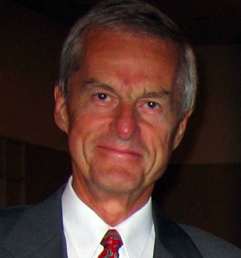Thinking Outside the Zoom Box with the Large Class Teaching Exchange (Part 2)

Part 2: Considerations for Online Course Delivery
By Hilary Sweatman, Jacqueline Kort Mascort, Véronique Brulé, Jennie Ferris
Are you teaching a large class this term, or preparing to teach one in the future? In this blog series, instructors who attended the Large Class Teaching Exchange (LCTE), that took place between May and August 2021, share strategies from their experiences teaching online this past year. This post features perspectives from two instructors who have demonstrated exceptional creativity and organization in their assessment design and teaching team management for large classes, as discussed during the LCTE sessions on Promoting Learning Through Assessment, and Collaborating with TAs and TEAM Students.
To learn about other ideas instructors shared for engaging and interactive learning opportunities, read the previous post.
Embedding Critical Reflection in Multiple Choice Questions
The transition to online learning may have saved a substantial amount in printing costs (and trees!) for exam booklets, but it poses new challenges for evaluating students’ learning. During the LCTE session on promoting learning through assessment, Dr. David Harpp of the Chemistry Department shared a simple strategy for using multiple choice (MC) testing to engage students in critical reflection and deeper learning in online exams.
 Dr. Harpp teaches World of Chemistry: Food (CHEM 181), a lecture-based series exploring various chemical and historical aspects of diet and food. A typical year sees 1300 - 1600 students enrolled in the Winter 2021 term and 500 in the Summer 2021 term. Given the class size, he opts for two midterms and a final exam, all MC , for assessing students’ learning in person. This approach came with pros and cons when moved online following the University-wide revised assessment format of open-book exams with longer windows of availability and writing time.
Dr. Harpp teaches World of Chemistry: Food (CHEM 181), a lecture-based series exploring various chemical and historical aspects of diet and food. A typical year sees 1300 - 1600 students enrolled in the Winter 2021 term and 500 in the Summer 2021 term. Given the class size, he opts for two midterms and a final exam, all MC , for assessing students’ learning in person. This approach came with pros and cons when moved online following the University-wide revised assessment format of open-book exams with longer windows of availability and writing time.
“This system, discovered by generosity and accident, helped students,” Dr. Harpp notes of the revised, online format. The longer window of availability resulted in fewer CHEM181 students requiring a makeup exam, as was the case previously in person due to scheduling conflicts or valid absences. In fact, CHEM181 grades increased by about 7 marks, from 76-77% to 82-85% for Winter 2021. While this might seem like a positive outcome, Dr. Harpp questioned whether this increase was because students were learning the course material better online , or because of the longer writing time and open-book exam format that allowed for more strategic guessing opportunities.
To get students thinking through their answers rather than guessing, he adjusted his MC testing strategy for the Summer 2021 term. He introduced an additional answer option of “none of the above are correct” to 90% of MC questions on the midterms and final. While this extra option does not entirely eliminate guessing, it does challenge students to reflect on their answering confidence by revisiting all the proposed answer options and thinking critically about which is correct. The result: grade percentages dropped by about 6 marks compared to the Winter 2021 term, returning to levels comparable to previous, in-person exam grades.
“I was interested that the grade percentage expanded to ~84% with the very liberal time and notebook considerations of the revised exam format and reduced to normal [~76%] by just - in effect - saying ‘are you sure?’” Dr. Harpp remarked on the change between Winter and Summer 2021 scores. “It really showed that a measurable percentage of the class was simply ‘not sure’ [of the correct response].”
Moving forward, Dr. Harpp intends to keep this learning tool as part of his MC testing. “I think students will benefit from this,” he comments. “[It] requires a much more careful note-taking activity on the part of the students and I would guess greater learning.”
Tapping into TA Expertise for Meaningful Student Learning
In discussing ways of collaborating with TAs and TEAM students, Dr. Gary Brouhard inspired his colleagues at the LCTE with a unique approach to TA management. Dr. Brouhard teaches Cell Biology and Metabolism (BIOL201), a mandatory first-year class for over 500 science students per term. Having only one TA when he first began teaching the course, he noticed that tutorial sections typically had an attendance of about 5 students, just 1% of his class. Understandably concerned, he asked his students why they chose not to attend, and they expressed a lack of confidence in the TAs’ expertise of course material. In response to this concern, Dr. Brouhard now divides his course sections between his team of 7 TAs, having each one work on about 4 weeks of course material to develop greater depth of knowledge than the average TA. He optimizes the division by aiming for close alignment between each TA and the content they teach, as is done at the faculty-level in team-taught courses, and furthermore increases expertise by devoting some TA hours to reviewing course material. Students are made aware of this division in order to promote the confidence that was previously missing.
 This teaching team restructuring has been motivating not only for the students, but for the TAs themselves. Tutorial attendance and feedback have improved, and TAs reportedly appreciate the shorter time commitment. Dr. Brouhard also cites his Head TA as a strength of his teaching team, a setup that streamlines communication among team members and with students.
This teaching team restructuring has been motivating not only for the students, but for the TAs themselves. Tutorial attendance and feedback have improved, and TAs reportedly appreciate the shorter time commitment. Dr. Brouhard also cites his Head TA as a strength of his teaching team, a setup that streamlines communication among team members and with students.
When asked what ideas he had for future improvements, Dr. Brouhard did not disappoint: he offered a wealth of ideas. Improvements will most likely include the implementation of central communication platforms for the teaching team, TA handbooks with specific readings and expectations, and a greater diversity of tutorials aiming to help students at different performance levels.
Continuing the Conversation
The Large Class Teaching Exchange provided a unique discussion space for instructors from across disciplines and course contexts to connect and share teaching experiences. Participants in the LCTE commented on hearing fresh ideas for well-known strategies and new food for thought, and many look forward to future opportunities for discussions focused on teaching and learning in large classes.
The authors would like to express their sincere thanks to participants at this summer’s Large Class Teaching Exchange sessions. Their generous sharing of teaching strategies and thoughtful questions, comments, and suggestions made for a thought-provoking series!